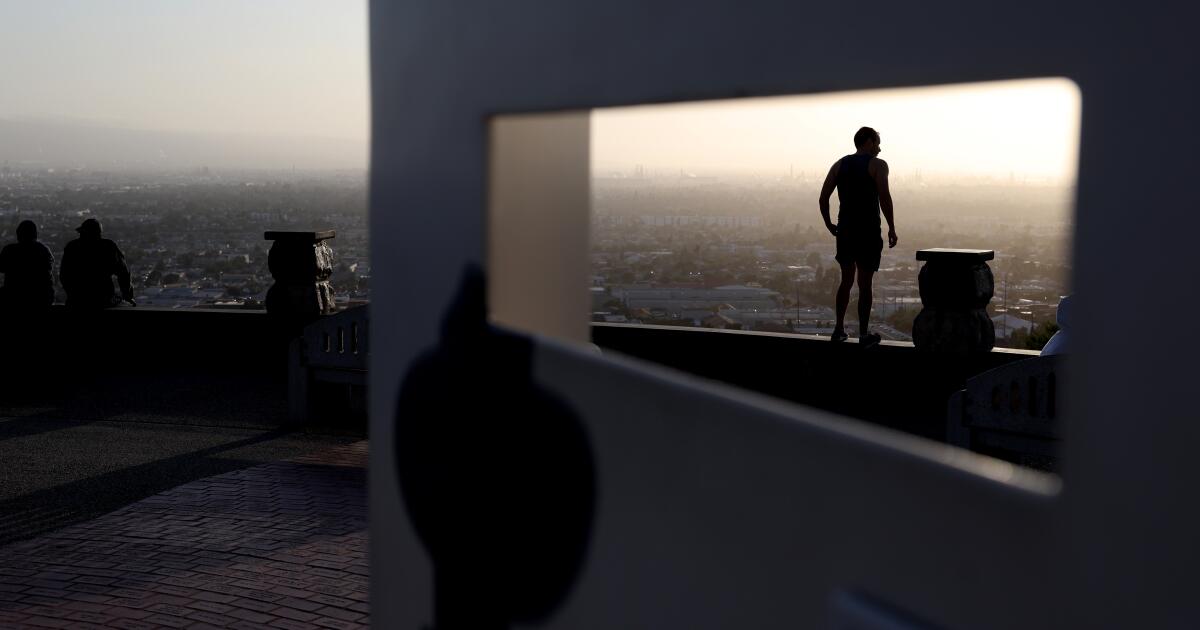Authorities are warning of extreme health and wildfire risks across California this week, as the longest heat wave of the year is set to kick off Tuesday, bringing triple-digit high temperatures with little cooling, even at night, to the vast majority of the state.
“This is really just a long-duration heat event that will provide little to no overnight [temperature] relief,” said Antoinette Serrato, a National Weather Service meteorologist in Hanford. The prolonged heat wave is expected to bring dangerous temperatures throughout the Fourth of July holiday weekend in many areas — particularly across Northern California, the Central Valley and southwestern deserts — lasting through early next week, she said.
Much of Los Angeles County’s inland valleys and mountains, including the San Fernando Valley and San Gabriel Mountains, are included in an excessive heat watch from Wednesday through Sunday, when high temperatures from 95 to 110 degrees are expected. However, most of the coastline is expected to be largely spared from the worst of the heat. Downtown Los Angeles, Orange and San Deigo counties were not yet included in any heat advisories.
On Tuesday, a combination of excessive heat is expected to overlap with a red flag warning — an alert for extreme fire weather — in parts of the northern Bay Area and Sacramento Valley, raising concerns about potential fire starts. Low humidity, winds up to 30 mph and hot temperatures could create the perfect storm for wildfires, officials warned.
Pacific Gas & Electric Co., the state’s largest utility, announced that power cuts were likely for Tuesday in some Northern California counties, “due to high winds and dry conditions,” part of its safety shutoff program that aims to reduce the chance for accidental fire ignitions. The counties that could be affected are Colusa, Glenn, Lake, Napa, Shasta, Solano, Tehama and Yolo, according to the utility’s website.
Preparing for a power shutoff
The California Governor’s Office of Emergency Services also announced Monday that it had pre-positioned fire engines and personnel across the state, given the extended heat wave and wildfire threat.
Good morning. Heat and fire weather dangers will build through the week! Excessive Heat Warnings, Heat Advisories, and Red Flag Warnings will be in effect for parts of the Bay Area and Central Coast throughout the week. See https://t.co/IELcH0TY3U for safety tips! #CAwx pic.twitter.com/9YSWgDfuQf
— NWS Bay Area 🌉 (@NWSBayArea) July 1, 2024
“A combination of strong wind, low relative humidity, and hot temperatures can contribute to extreme fire behavior,” the National Weather Service wrote in its red flag warning for the Sacramento Valley and North Bay interior mountains, lasting from Monday night through Wednesday.
But weather officials say the greatest concern this week comes from the extreme, extended heat, which is expected to bring major health risks.
“As we start moving into the weekend, there are a lot of areas… that are going to see extreme heat risk,” Serrato said, referencing the weather service’s new heat risk tool. “Overnight low temperatures will be around 70 degrees for a lot of areas, maybe even higher.”
From Northern Humboldt County to inland San Diego County — and practically everything in between — the National Weather Service has issued an excessive heat warning this week, in most areas beginning Tuesday and lasting at least until Friday, in some areas as long as Monday.
“This level of rare, long-duration extreme heat with little to no overnight relief affects everyone, especially those without effective cooling and/or adequate hydration,” the extreme heat warning said for the Central Valley, where high temperatures are forecast to remain at or above 107 degrees from Tuesday through July 8, the following Tuesday.
Highs will reach up to 121 in the Coachella Valley and San Diego County deserts during the heat wave; in the Antelope Valley highs are expected up to 105 to 115 degrees.
In Death Valley, highs could peak at 125 later this week, where “low temperatures may not fall below 90 degrees for several days,” the weather service warned.
In the state’s most northwestern corner, weather officials are forecasting potentially record-breaking temperatures, with northern Humboldt County, including Hoopa, expecting highs Wednesday into the weekend above 110. Trinity and Lake County could have areas up to 115 degrees, the weather service warned.
The National Weather Service’s detailed forecast only extends a week, but long-range predictions show a high chance for above-average temperatures to continue through at least July 10, according to the Climate Prediction Center.
This kind of extended, extreme heat will affect everyone, including vulnerable populations such as babies, the elderly and pregnant people, said Serrato, who urged residents to take precautions and seek out cooling centers set up across the state if necessary.
“Avoid going outside during the hottest hours of the day and make sure to stay hydrated,” Serrato said. “Try to stay cool and stay safe.”

